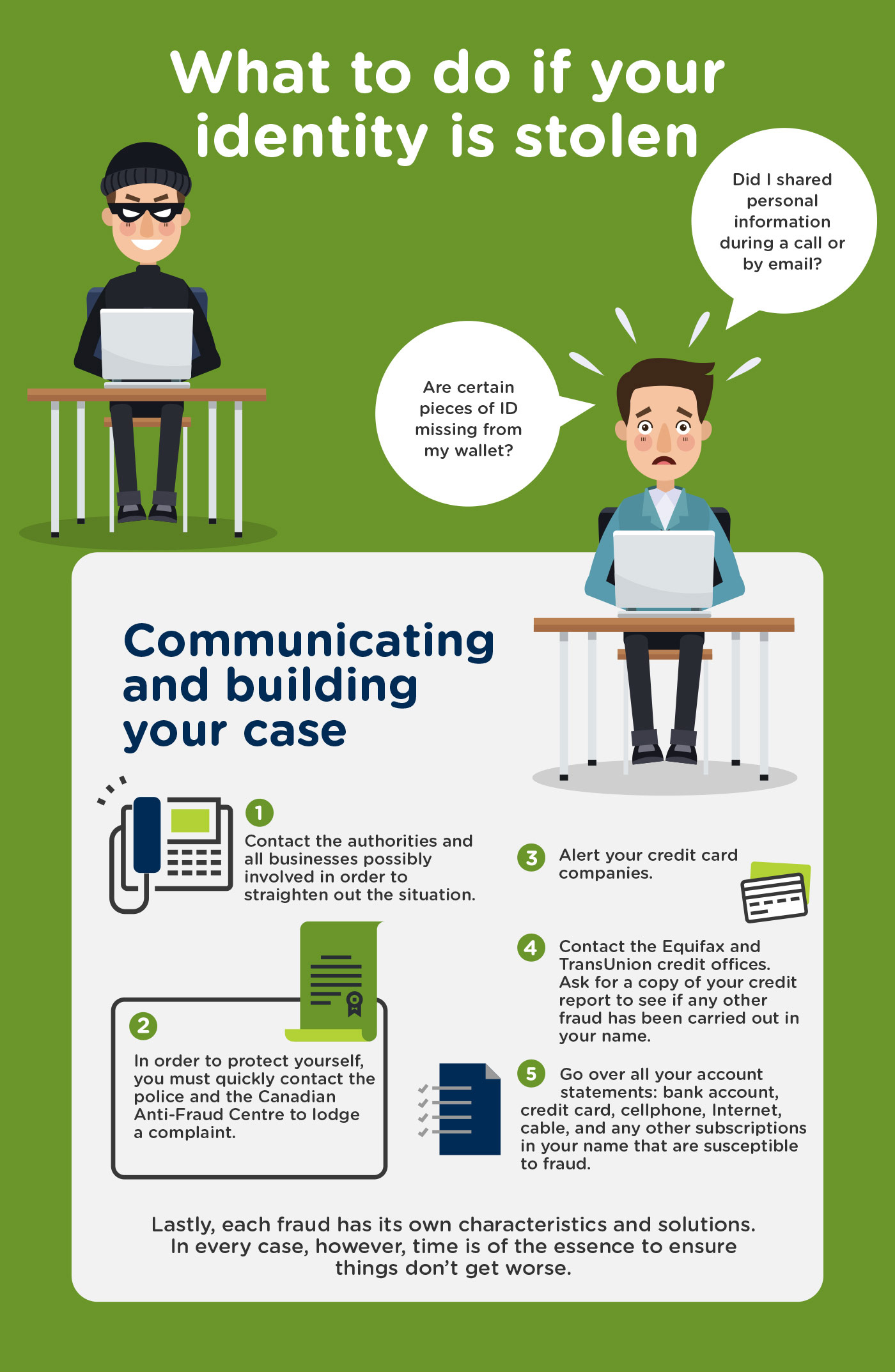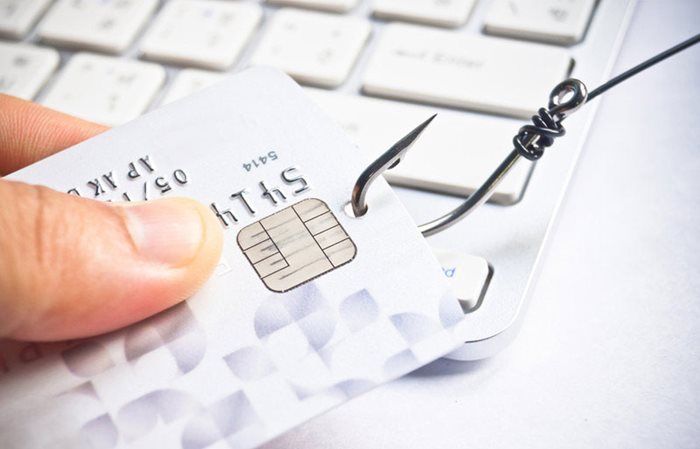There’s no denying it, being a victim of identity theft is a big deal. While it may be tempting to curl up into a ball and cry, you’ll need a great deal of patience and a methodical approach to get back on track.
The first clues you may be a victim of identity theft can show up in various ways: an unknown expense on a credit card bill, your cellphone provider contacting you about a new phone you never ordered or received, etc. The list is long and ever-changing, thanks to new technologies.
If you believe you are a victim, here’s a step-by-step guide to help you in your efforts.

Retrace your steps
Did you answer a suspicious call during which you shared personal information? Did you send confidential information in an email? Are certain pieces of ID missing from your wallet? The goal here is not to launch a major investigation, but to pinpoint the source of the problem and focus your efforts accordingly.
If you’ve lost certain pieces of ID, retrace all the ones you still have. They may come in handy to prove your identity during your endeavours.

Communicating and building your case
Set aside a block of time to contact the authorities and all businesses possibly involved in order to straighten out the situation. Jot down the details of every discussion, either over the phone or in person.
In order to protect yourself, you must quickly contact the police and the Canadian Anti-Fraud Centre to lodge a complaint. Be sure to keep your police case number handy, as financial institutions and service providers may request it before erasing the unlawful transactions carried out in your name.
Alert your credit card companies. Most major cards offer protection as long as the theft is reported quickly.
It’s also essential that you contact the Equifax and TransUnion credit bureaus. Ask for a copy of your credit report to see if any other fraud has been carried out in your name. Demand that a fraud warning be added to your file. This will ensure that a new request cannot be approved unless they contact you.
Incidentally, if you want to find out more about your credit report, read our article “22 common myths about your credit report”.
Go over all your account statements: bank account, credit card, cellphone, Internet, cable, and any other subscriptions in your name that are susceptible to fraud.
Contact every financial institution and service provider that proceeded to inquiries on your file without your request. Have them add a password to your file, which will be requested whenever you contact them.
In certain cases, it might be a good idea to alert Canada Post if you believe someone tried to have your mail rerouted.
Lastly, each fraud has its own characteristics and solutions. In every case, however, time is of the essence to ensure things don’t get worse. To help avoid this type of situation, read our article “Protecting yourself against identity theft”
Key takeaways
- If you’ve lost certain pieces of ID, retrace all the ones you still have. They may come in handy to prove your identity during your endeavours.
- In order to protect yourself, you must quickly contact the police and the Canadian Anti-Fraud Centre to lodge a complaint.
- It’s also essential that you contact the Equifax and TransUnion credit bureaus.

